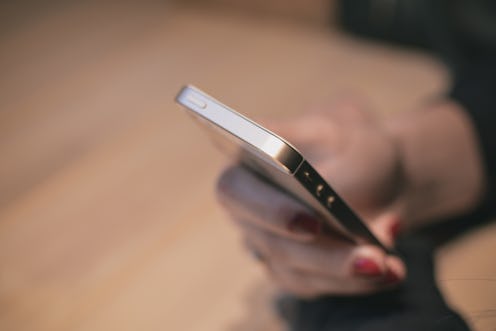Life
Wait, Twitter Has A "Dislike" Button?
Of all the social media networks I frequent, I still feel that Twitter holds the most mystery; the microblogging site just isn't as second nature to me as Facebook, what with there being so much to learn besides hashtags. Today, for example, I was shocked to discover that a Twitter "dislike" button actually exists. What's more, as I took to Twitter to do some sleuthing of users' opinions of the option, it seems I'm not the only one who didn't know about it, either.
When it comes to Twitter faux pas, we're probably all guilty of a few; for example, subliminal tweeting, or "subtweeting," as it's known, is when we fire off salty, thinly-veiled messages not directly addressed to the person who has irritated us. Then there's the whole tweeting-material-without-having-read-it-first — generally not a good idea, because really, you never know what kind of views you're supporting or critiquing unless you've actually digested them properly yourself, right?
And although not being aware of Twitter's dislike button of sorts is perhaps not the largest social media crime going, if you're anything like me and just like to be up on your social game, you'll still want to know where this feature is located, how to use it, and how the heck you missed it in the first place. So, allow me to explain what this magical, mysterious button is all about.
The first thing to note is that Twitter's dislike button is actually pretty well hidden. Don't beat yourself up about not finding it sooner, because it seems a lot of users have been in the same boat. If you want to locate it, Mashable reports that it can be found "under the drop-down menu available on some tweets (in iOS and Android)." There, you'll find an option that reads, “I don’t like this Tweet.” According to Twitter's support site, selecting the "I don't like this Tweet" option "helps Twitter better understand the types of Tweets that you'd like to see less of in your Home timeline." This, in turn, will help the social media platform "optimize and tailor your experience in the future."
That means that the button doesn't let other users know you don't like their tweets; rather, it works behind the scenes to help the algorithm. Remember how Facebook's resistance to implementing a "thumbs down" button has to do with keeping the social network a wholly positive space? The Twitter "dislike" button seems to accomplish something similar. This doesn't, however, make the button less powerful. Because it directly impacts what you see on your timeline, it's worth being mindful of when and how you use it. There are no take-backsies; as Paul Armstrong notes at Forbes, "You should also think before you use it because Twitter does not give you an option to recant once pressed if you do not quickly press an 'Undo' link."
As social networks continue to add and adjust the functions available on their interfaces, it's worth remembering that tools like this should be used carefully; we're not always sure what outcomes they produce, and many of us don't bother to look up the options on each platform's support pages before pressing random buttons. However, it's good to know that these tools exist — because although avoiding creating a social media echo chamber is important, ultimately, your timeline is your timeline. You have the power to control what you do or don't see on your own corner of the internet.
